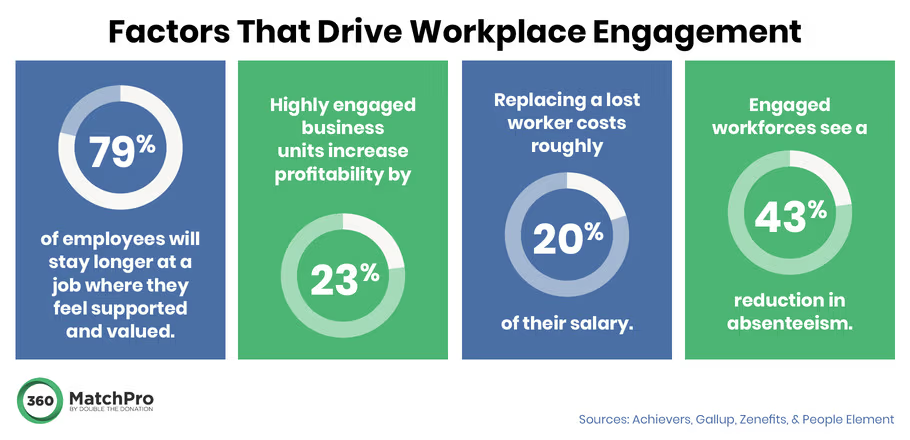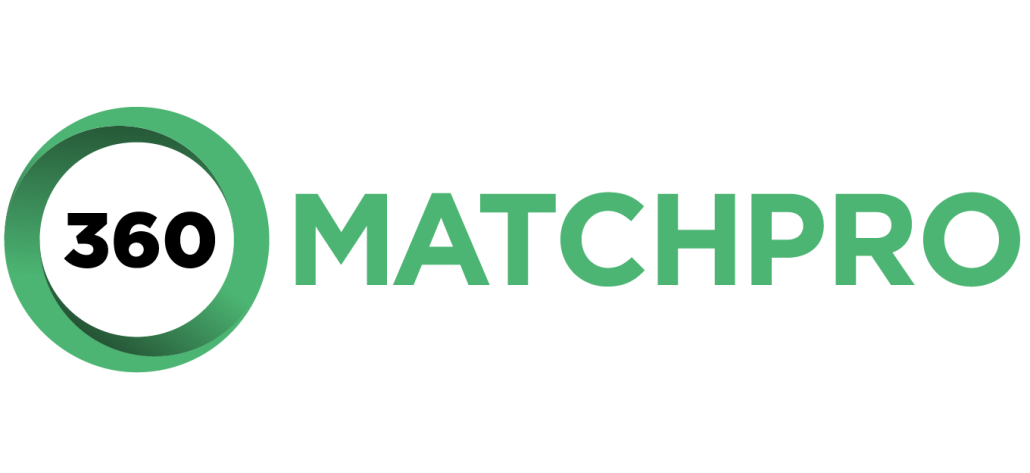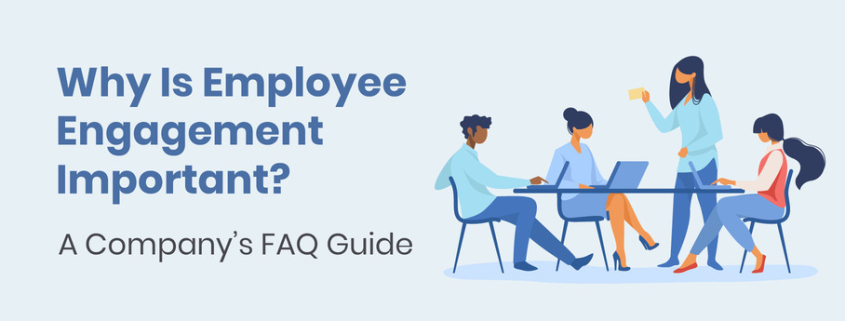Why Is Employee Engagement Important? An FAQ Guide
Imagine a workplace where employees aren’t just punching in, but rather, they’re passionately driving the company forward. Employee engagement is the lifeblood of such companies, pumping energy and creativity into every project.
The most successful companies have recognized the key to productivity, innovation, and long-term growth lies in something more profound: employee engagement.
In this FAQ guide, we’ll answer burning questions that corporate leaders have when hashing out their approach to workplace satisfaction. In the end, you’ll fully understand why employee engagement is important and have targeted strategies to boost satisfaction. Here’s what we’ll cover:
- What is employee engagement?
- What drives engagement in the workplace?
- What are the benefits of employee engagement?
- What are some recent employee engagement trends?
- How can my company increase the benefits of employee engagement?
From better retention to higher productivity, your company stands to gain a lot from prioritizing its employees. Now, let’s delve into the transformational power of an engaged workforce.
What is employee engagement?
Employee engagement is a measurement of how dedicated employees are to their work, the company, and its goals and values. Engaged employees are more than just physically present at work. They also:
- Are committed and invested in their projects.
- Value their roles and actively contribute to the company’s success.
- Find meaning in their tasks and put their best foot forward to help the company succeed.
Essentially, if an employee is engaged, you can trust that they are a dedicated, loyal member of your business who is eager to help you succeed.
What drives engagement in the workplace?
More than one factor contributes to workplace engagement, and it’s important to understand what drives your employees. That way, you can create a positive and motivating work culture.
Common drivers of employee engagement include:

- Caring managers: You’ve likely heard the phrase “People don’t quit bad jobs; they quit bad bosses.” Effective, supportive leadership can make all the difference in employee satisfaction. When workers feel that their managers value their contributions, they’re more likely to be engaged at work.
- Fair compensation and benefits: Competitive compensation and perks like health benefits can boost morale. Paying your employees fairly communicates that they’re important assets to your team.
- Corporate giving: America’s Charities Employee Research Snapshot found that 71% of employees feel it’s imperative to work for a company that supports charitable giving. Workplace giving opportunities like matching gifts and corporate volunteering can go a long way in establishing a sense of purpose for employees.
- Appreciation: Employees who feel appreciated are more engaged. Pat your employees on the back for a job well done by rewarding them for their achievements.
- Work-life balance: Organizations that encourage work-life balance can drive greater engagement. Balancing professional and personal life is essential for well-being and job satisfaction.
Overall, employees who feel like valued contributors and that their work means something tend to be engaged. Now that you understand what impacts satisfaction, let’s explore why employee engagement is important.
What are the benefits of employee engagement?
Beyond making your company a more enjoyable workplace, a highly engaged workforce can generate a ton of value for any business. Here are some of the most common benefits of employee engagement for companies:

- Retention and loyalty: Organizations with engaged employees usually experience lower turnover. In fact, 79% of employees report they would stay longer at a job where they feel supported, cared for, and valued.
- Productivity: Engaged employees tend to be more focused. They’re often willing to invest extra effort to achieve company goals and ensure they’re performing well. Gallup’s organizational culture research found that highly engaged business units increase profitability by 23%.
- Innovation and creativity: Engaged employees are more likely to contribute fresh ideas and innovative solutions to challenges.
- Increased profitability: Another benefit of employee engagement is its impact on your company’s profitability. Engaged employees can help increase sales, improve customer retention, and save money thanks to reduced turnover. After all, replacing a lost worker costs roughly 20% of their salary. For instance, if an employee makes $40,000 annually, your business spends approximately $8,000 to replace them from incurred expenses, such as time spent on interviews, onboarding costs, and productivity loss that the original work could have contributed.
- Reduction in absenteeism: People Element’s 2023 Employee Engagement Trends Report found that highly engaged workforces see a 43% reduction in absenteeism. People will be excited to show up to work when your company prioritizes their satisfaction and well-being.
- Recruitment: When you treat your employees well, word will get around! That’s why organizations with engaged employees tend to have better reputations in the job market, helping to attract top talent.
Valuing your employees can go a long way, and you can expect dozens of benefits from employee engagement.
What are some recent employee engagement trends?
With advancements in technology and changes in how we work, companies should pay attention to emerging employee engagement trends. Let’s explore some trends your company should consider.
Trend 1) Workplace giving
Employees want to feel like their work is making a difference. That’s why job seekers are looking for companies that give back through corporate social responsibility (CSR). In fact, 86% of employees want the opportunity to participate in corporate giving.
We’ll explore specific CSR opportunities you can offer to increase employee engagement later.
Trend 2) Engagement technology
More companies are adopting software to engage their employees. This type of software is designed to measure, analyze, and improve various aspects of employee engagement.
Our employee engagement software guide explains that this includes “both platforms that employees actively interface, like a matching gift portal, and tools that your leadership uses to analyze employee behavior and make workplace decisions to improve employees’ day-to-day experience.”
For example, you might use survey tools, CSR software, or appreciation software to keep employees engaged.
Trend 3) Flexibility in where they work
Remote work is the standard for many careers now. Traditional office jobs still exist, but technology makes it easy to transition to working from home. This extra flexibility can contribute to employee engagement.
Companies that offer remote or hybrid options give employees more control over how, when, and where they work. Doing so shows that leadership knows that traditional one-size-fits-all work arrangements aren’t suitable for everyone. What’s more, this can reduce commute times, enhance work-life balance, and offer a sense of autonomy. In turn, employees will naturally feel happier when on the clock.
How Can My Company Increase The Benefits of Employee Engagement?
Now that you know why employee engagement matters, you’re probably wondering how to increase workplace satisfaction. Let’s explore a handful of satisfaction strategies that will help you capitalize on the trends we just covered.

Offer employee development and growth opportunities.
According to LinkedIn’s 2023 Workplace Learning Report, workers aged 18-34 prioritize career growth and skill development opportunities as their top two most important factors when considering a job opportunity.
Offer chances for skill development and career advancement to contribute to your employees’ personal and professional growth. For example, you might offer:
- Training Programs: Develop training programs that help employees acquire new skills or enhance existing ones. This might include technical skills, soft skills, and industry-specific knowledge.
- Mentorship Programs: Pair experienced employees with new ones to transfer knowledge, teach skills, and share career guidance.
- Certifications: Set aside funds for employees to take courses, acquire certifications, or get degrees relevant to their career aspirations.
- Lunch and Learns: Host regular sessions where employees can cover relevant topics, trends, or best practices in your industry with their colleagues.
Employees want jobs that help them improve their skills and knowledge, so make sure they have the resources available to them to do so!
Effectively communicate and give feedback.
Informal and formal communication allows workers and company leaders to connect. The larger your organization is, the more likely someone’s bound to be out of the loop at some point. To avoid this, actively inform them about company updates. From here, you’ll want to:
- Give honest feedback. Provide both positive and constructive feedback on employees’ performance. This allows you to acknowledge their accomplishments and offer guidance on areas that need improvement.
- Adapt to different communication styles. Your employees have different communication styles and preferences. While some might prefer face-to-face meetings, others may prefer written communication. Adapt your approach to accommodate these differences.
- Encourage socialization among colleagues. Line up regular events, or encourage employees to do so. This allows them to connect and build camaraderie outside the workplace. You might even create a socialization budget for anyone who wants to host a company event.
Effective communication helps develop an environment where employees feel heard, valued, and motivated to do their best work. In turn, this will lead to improved employee engagement and overall job satisfaction.
Recognize and reward employees.
Create a positive work environment and culture by recognizing employees who do exceptionally well. Otherwise, you’ll risk low employee engagement and might lose your hard workers altogether!
According to Zippia’s employee loyalty research, 79% of employees who quit cite a lack of appreciation as their main reason for leaving.
Simple gestures like “thank you” notes or public acknowledgment can go a long way in boosting morale. If you’re looking for an easy recognition idea, one of the most effective ways to recognize your employees is to send digital shoutouts.
We recommend using an eCard platform like eCardWidget to design your shoutouts. You might create a simple “thank you” card or tie your designs to specific company values. Then, managers can send them to employees who exemplify those values or otherwise go above and beyond.
Check out this video to learn how eCards can power your recognition efforts:
For example, you might reward a client service representative who receives a positive review from an important client with a gift. Or, if you’re pushing your CSR initiatives, you might reward employees who volunteer a certain number of hours with a charitable giving stipend or a volunteer grant.
Leverage corporate giving as an engagement tool.
Workplace giving is one of the most impactful employee engagement ideas. Not only will you tie employees’ jobs to a sense of purpose, but you’ll also positively impact society!
Luckily, there are plenty of workplace giving opportunities you can offer, such as:
- Matching gifts. With this corporate giving program, you’ll match employees’ charitable donations. Typically, this is done at a 1:1 rate, meaning you’ll match employees’ donations dollar-for-dollar.
- Charitable giving stipends. This involves rewarding employees with money to donate to a charity of their choice.
- Payroll deductions. Enable employees to donate a small part of each paycheck to a nonprofit of their choice. Create a list of pre-approved nonprofits or causes to ensure the nonprofits your employees donate to align with your CSR goals.
- Company volunteerism. Workplace giving can mean donating time, too! Work with nonprofits to line up company volunteer days where your team can work together to support a cause. You might also offer volunteer grants in which you’ll donate to charities your employees volunteer at in their free time.
Of course, these are just a few options. Survey your employees to learn what types of CSR initiatives they’d like to see your company push forward. Doing so will help you experience the benefits of employee engagement.
Powering your CSR efforts with dedicated software
Whichever programs you implement, we recommend leveraging CSR software to power your efforts. These platforms come equipped with tools that simplify workplace giving.
For example, let’s say you use a platform that enables matching gift auto-submission. Whenever one of your employees donates to a charity that uses Double the Donation’s industry-leading matching gift database, they can opt into auto-submission.
Here’s what the process looks like without auto-submission:
- A donor gives to a nonprofit.
- They research their company’s matching gift guidelines using our employer search tool.
- After determining their eligibility, they fill out a form with details about their donation.
- The company reviews the request and confirms the donation with the nonprofit.
- If everything’s in line, the company donates to the nonprofit.
With auto-submission, your employees can skip some of those steps. That makes it much easier for them to engage in workplace giving! When donating, they’ll simply click a checkbox to opt into auto-submission. Our tools will handle it from there by using their company email address to find your guidelines, check their eligibility, and fill out your matching gift request form.

Know that while Double the Donation isn’t CSR software, we do integrate with leading providers like Givinga, Millie, POINT, and Selflessly. Reach out to learn how you can enable auto-submission through your corporate giving platform.
Continuing to Develop a Positive Workplace
Today, success is no longer solely measured in terms of profits and market share. It’s about fostering a workplace where employees are satisfied and fully engaged in their roles. Why? Because the benefits of a highly engaged workforce extend far beyond the office walls.
From offering workplace giving to consistently communicating, you can do a lot to make sure employees stick around and feel fulfilled at work. Now that you understand why employee engagement is important, start hashing out your plans to keep them happy.
If you’re looking for more advice to elevate your company, check out these resources:
- What Is Corporate Volunteerism? The Top Guide for Companies. Volunteerism is a proven way to help employees feel more fulfilled at work. Experience the vital benefits of employee engagement that come with corporate volunteering.
- How to Start a Corporate Matching Gift Program: Top Tips. Matching gifts are one of the easiest ways to get started with corporate giving and boost employee engagement. Learn how to launch a matching gift program with this guide.
- How to Motivate Employees: 10 Easy Ways to Uplift Workers. Don’t miss out on the benefits of employee engagement! Keep your employees motivated with the tips in this guide.





